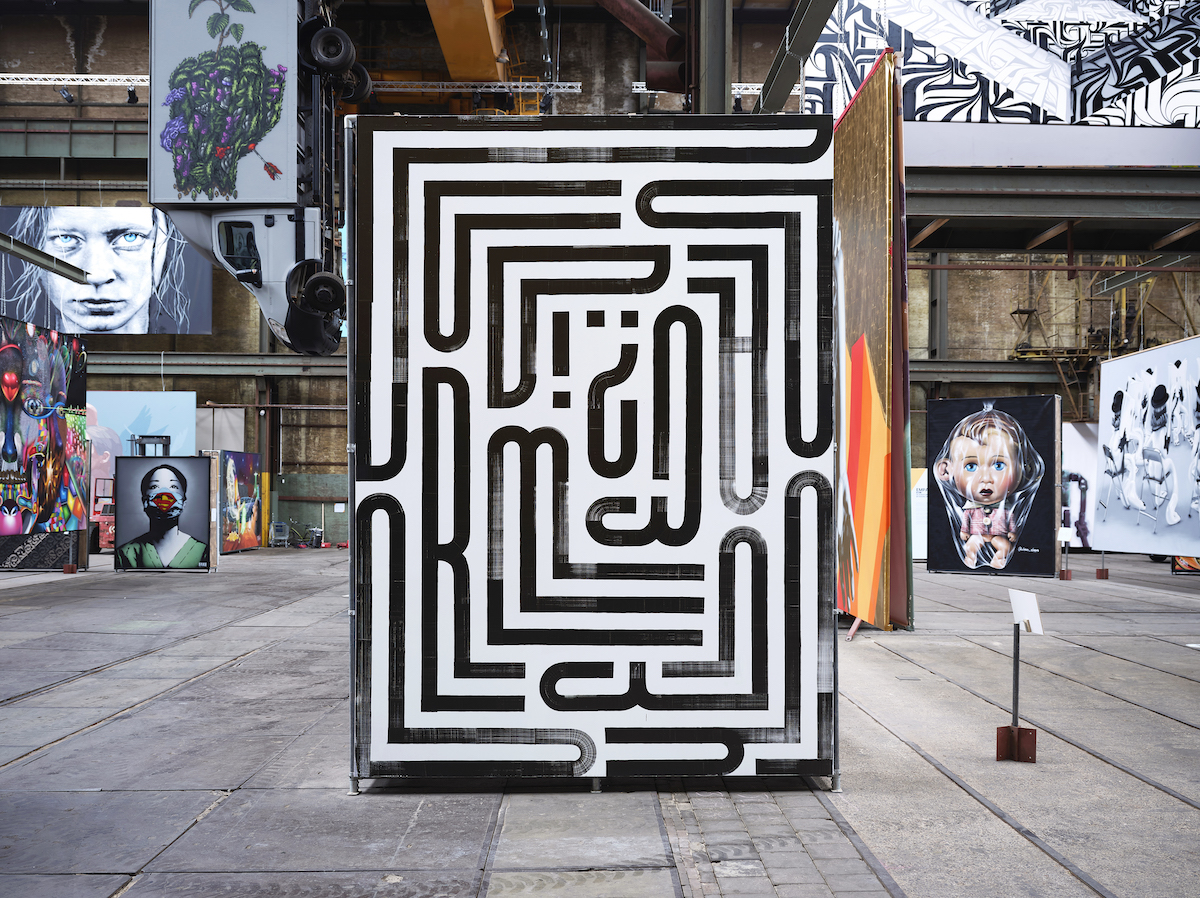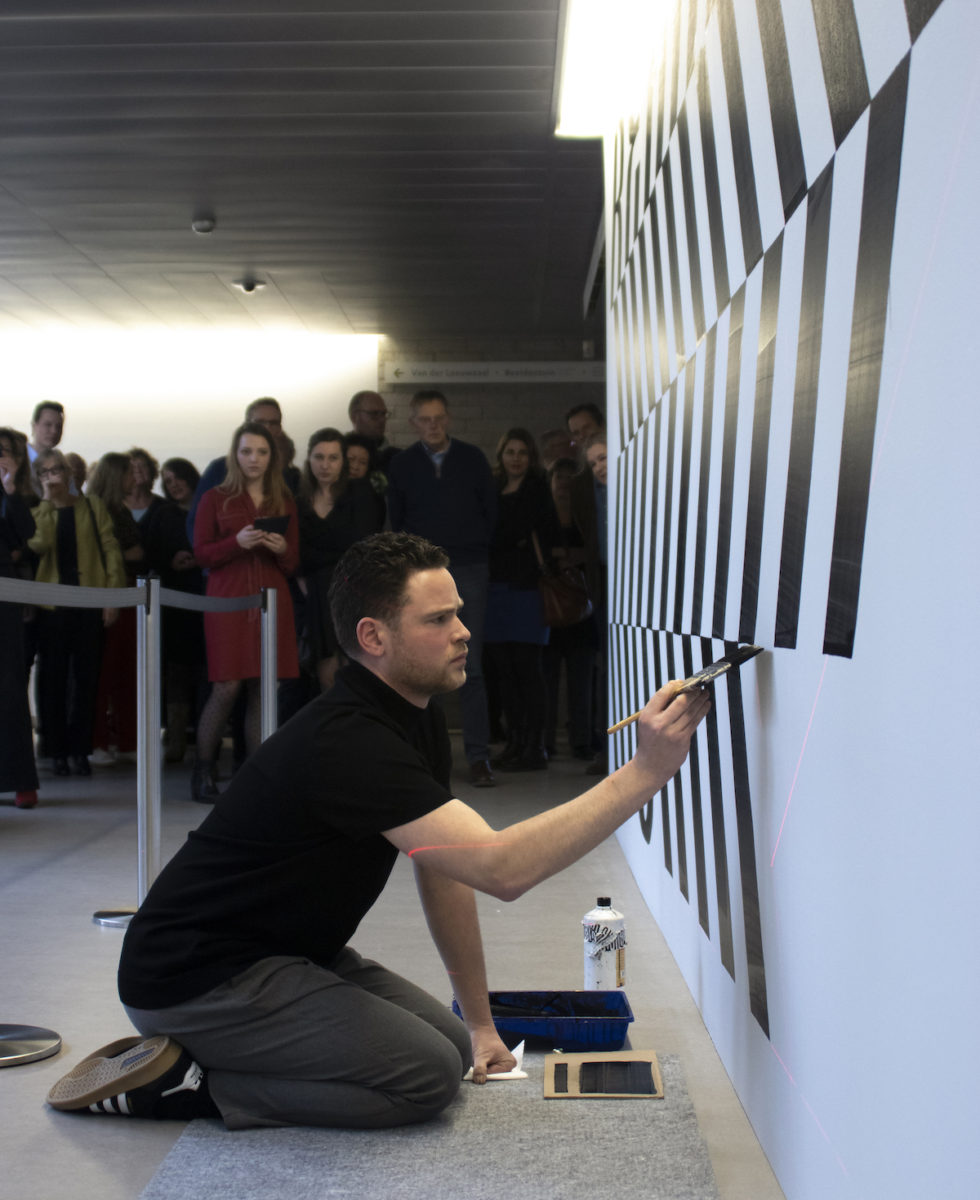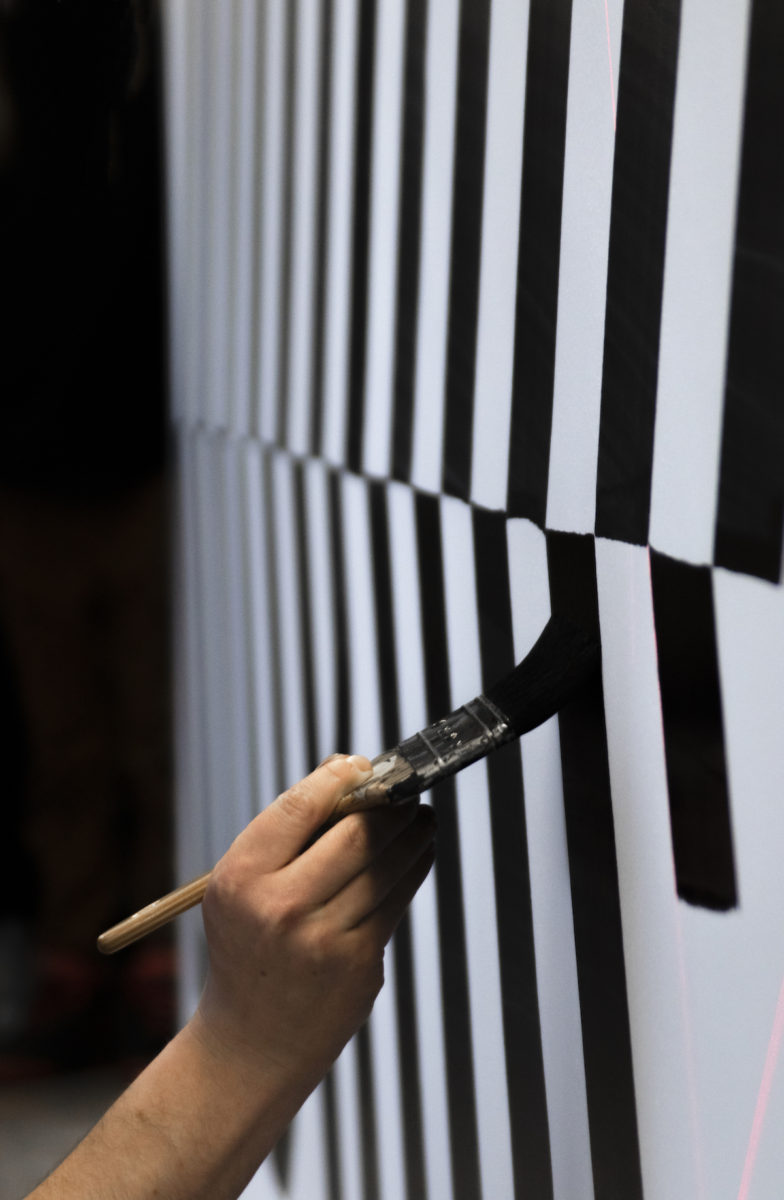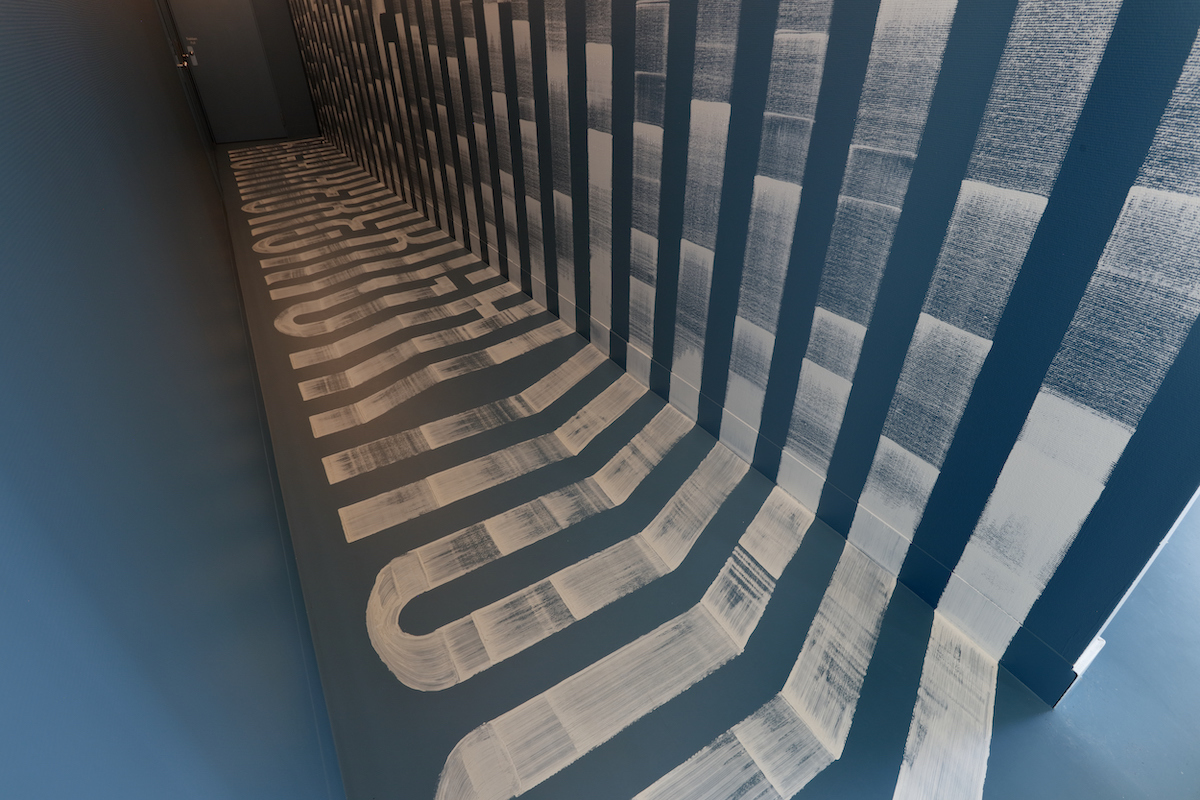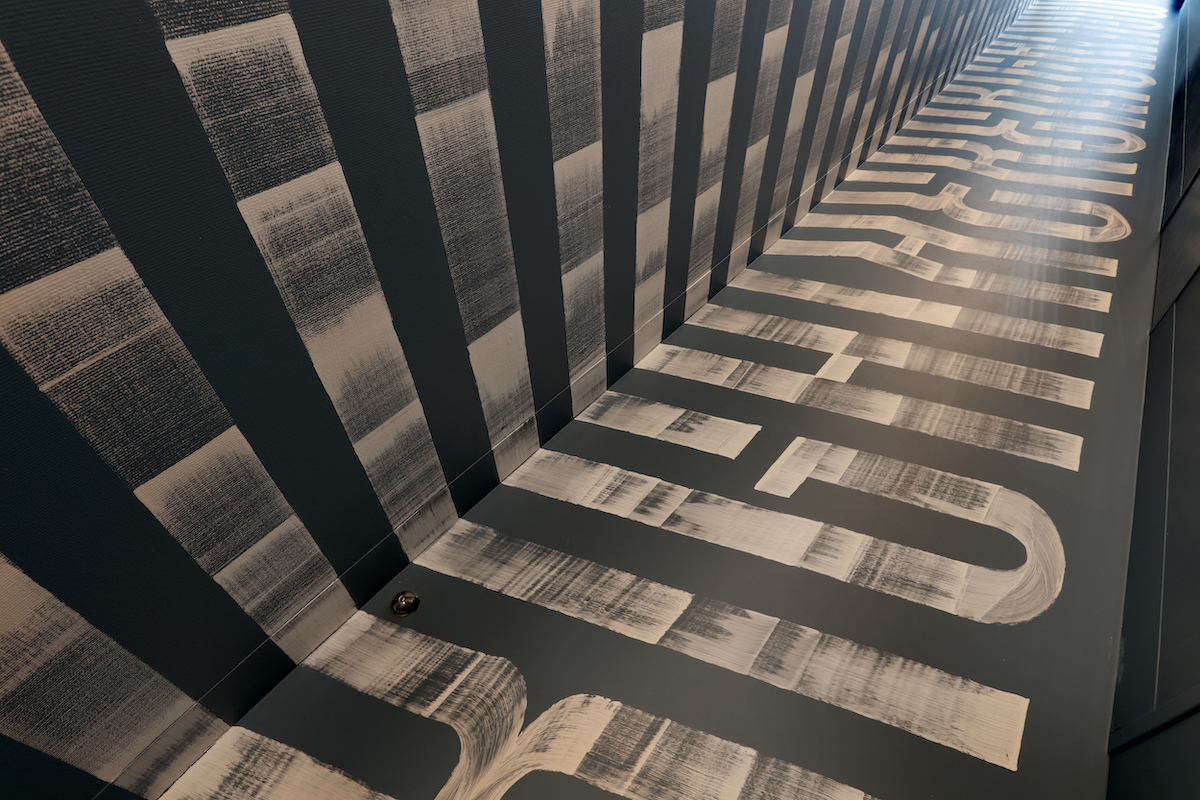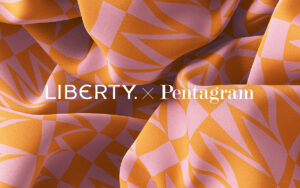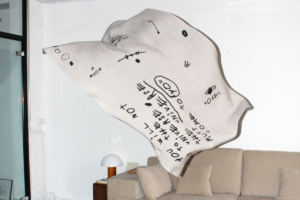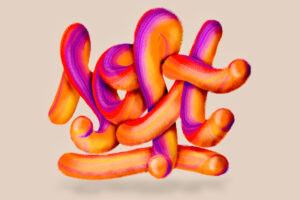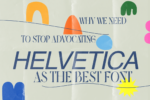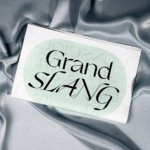Productive limitations, stark refinement and a sense of purity feel like central building blocks when it comes to the magnetism of Guido de Boer’s work. Starting out creating his own hip-hop mixtape covers with his brother as a child, he later moved onto larger scale tagging and graffiti, and now creates larger-than-life, black and white murals using only a brush and ink. Having exhibited in venues such as Kunstmuseum Den Haag, STRAAT Museum, Wereldmuseum Rotterdam and – perhaps most ambitiously – at Kröller-Müller Museum, the Dutch graphic designer-meets-artist’s work brings letterforms into immersive, abstract, experiential worlds; questioning the boundaries between text, information and art.
Photo: Myrtje Majoor
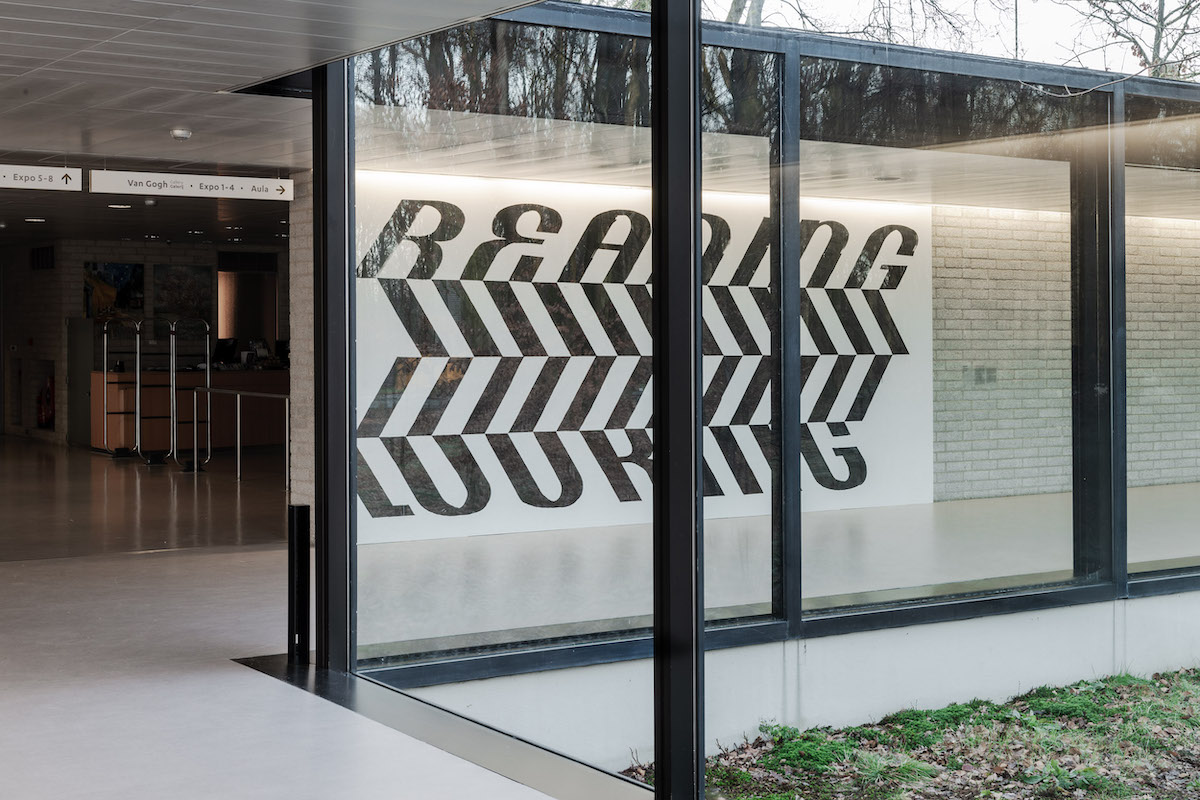
Photo: Marjon Gemmeke
‘I really love to work on a big scale and that is because I just really like the contrast of letters’, Guido says. ‘There are letters here, you know,’ he continues, holding up his phone, ‘that are actually quite small in your pocket or in a newspaper, and they are just like objects you can read in a small size and then the message is clear. It’s just what it is. But, if you scale this up to enormous portions (and in Dutch we have this word “levensgroot”, which means like “lifesize”, whatever that means because everything in life has a size) then it starts to become something else. Then it’s not only text anymore – it can become an experience and you can walk through my work in some cases.’
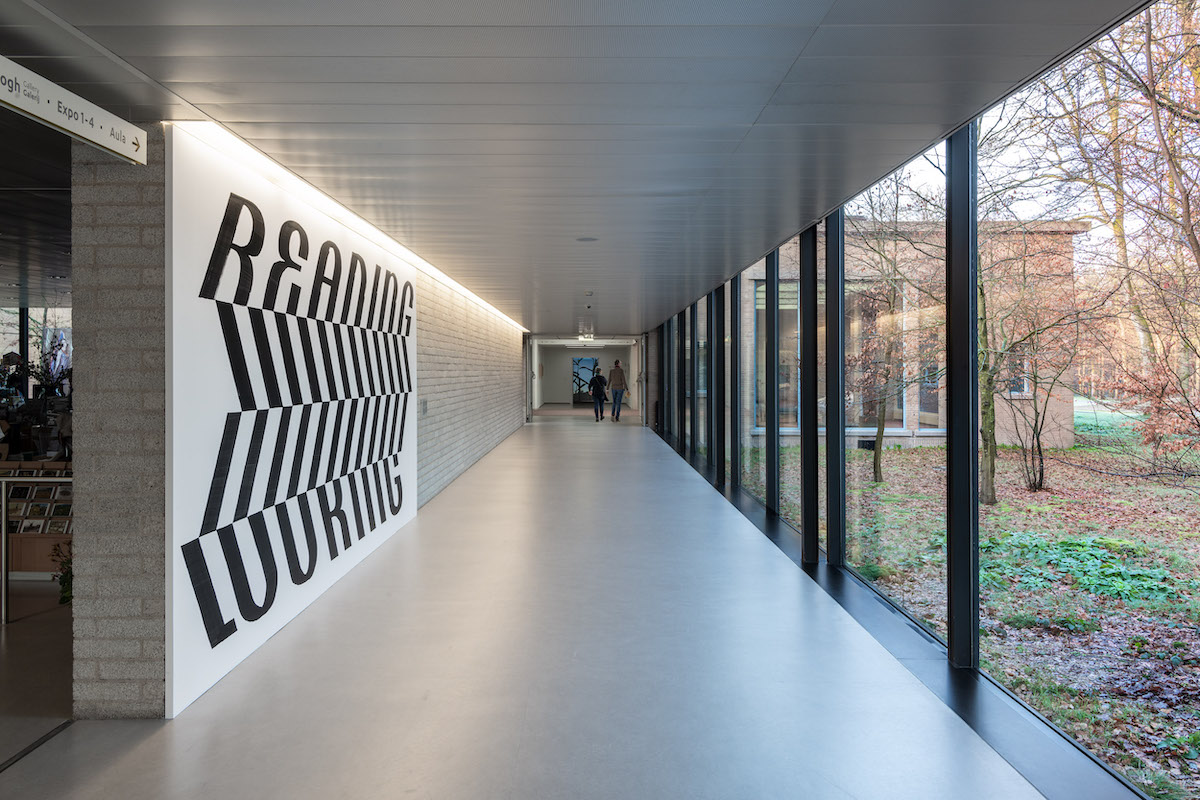
Photo: Marjon Gemmeke
Almost innately driven by limitations and drawn to simplification, Guido’s relationship with rules is crucial to the construction of his immersive murals. ‘I love rules because they’re limiting and every time you’re being limited by whatever kind of aspect, then I think your creativity is being questioned’, he says. ‘And that also probably comes from that fact I am schooled as a graphic designer – I just like to have restrictions.’
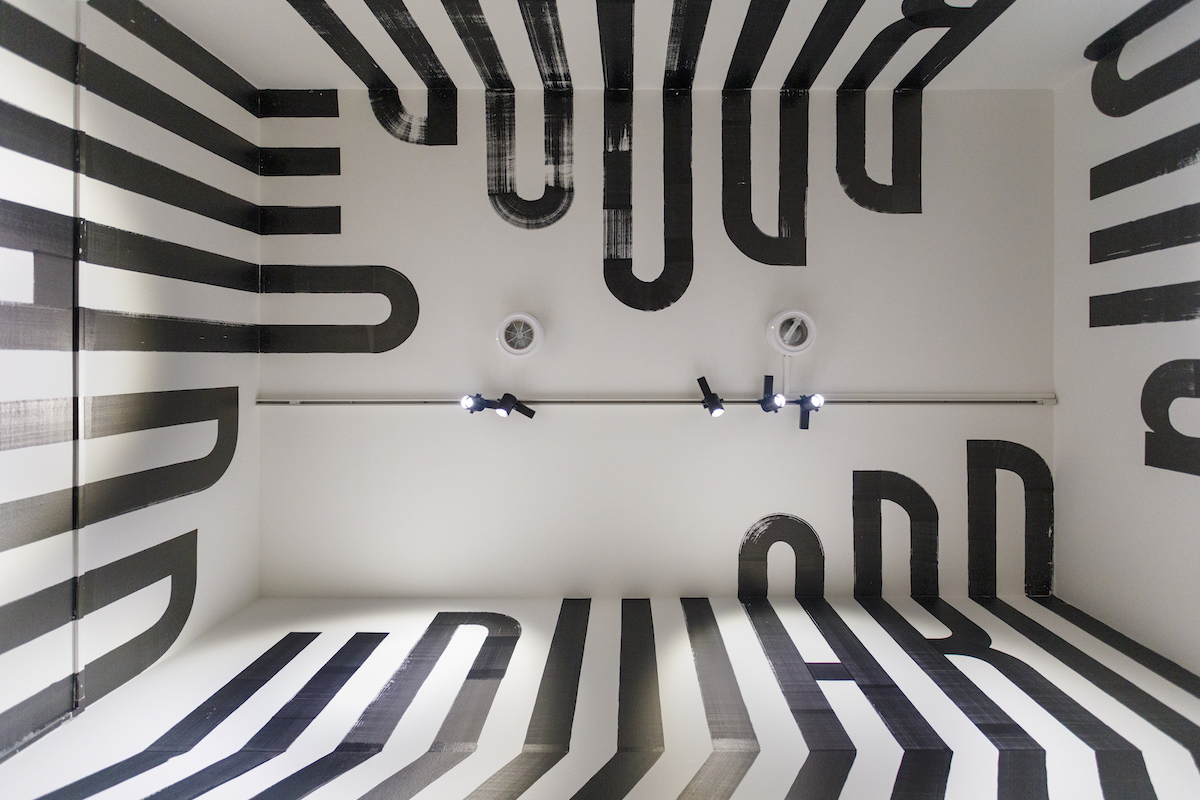
Moreover, when it comes to mural designs, gallery spaces offer the added layer of their own architectural boundaries. Using laser guides as a base for his compositions, Guido’s process has developed in a way which allows his work to flex and form a relationship with the building, while keeping space for the physical spontaneity of hand-painting to play its part. With projects as large as his – notably the incredible mural piece blessing the walls of Wereldmuseum Rotterdam – Guido often uses ladders, scaffolding or even cherrypickers to achieve his works. However, whilst Guido’s considered approach results in incredible creations, he also highlights some of the perils of over-preparation, as well as the importance of physically connecting with the space his work will inhabit.
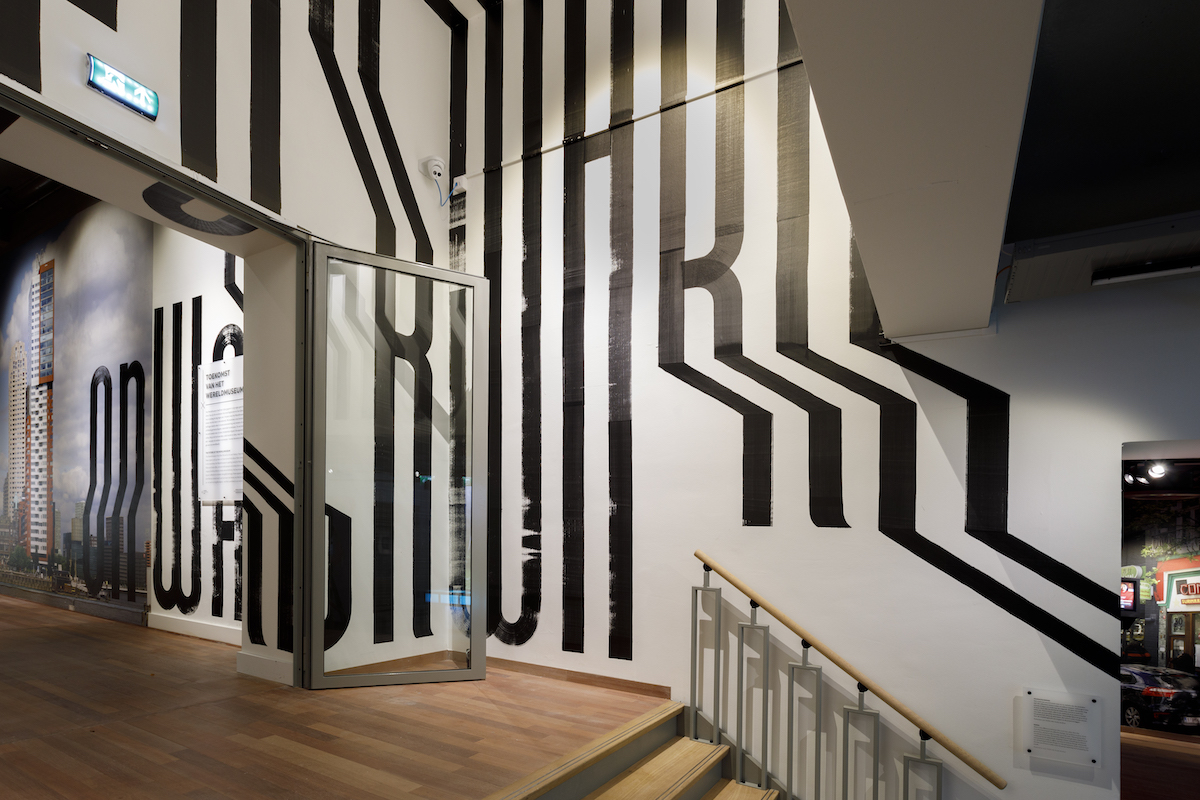
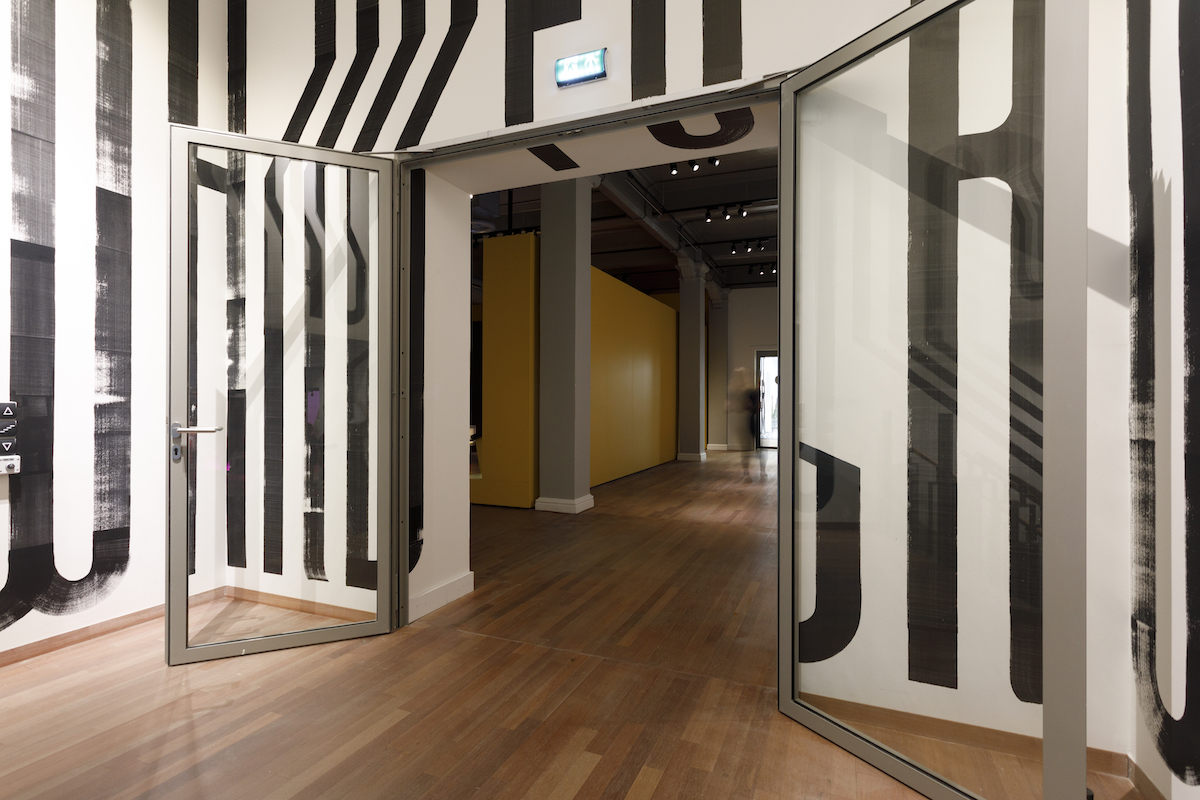
Reflecting on an example of this upon his arrival at Wereldmuseum, Guido explains ‘I think what was very important, and what I’ve learnt was to never give the responsibility of the measurements to somebody else. Since it’s going to be my work, I have to deal with all the problems I have to face – how shitty the walls or the building is built or whatever – so that’s something I have to measure. And, in a more philosophical sense, I have to build a relationship with the place, with the space, to make a good work’. Upon arriving and quickly realising the measurements he’d used in his initial plans were wrong (due to changes in the building’s walls over time such as shifting angles or added layers of grout) Guido had to recalculate his work to preserve the integrity of the piece; resulting in a formative experience and a lot of lessons learned.
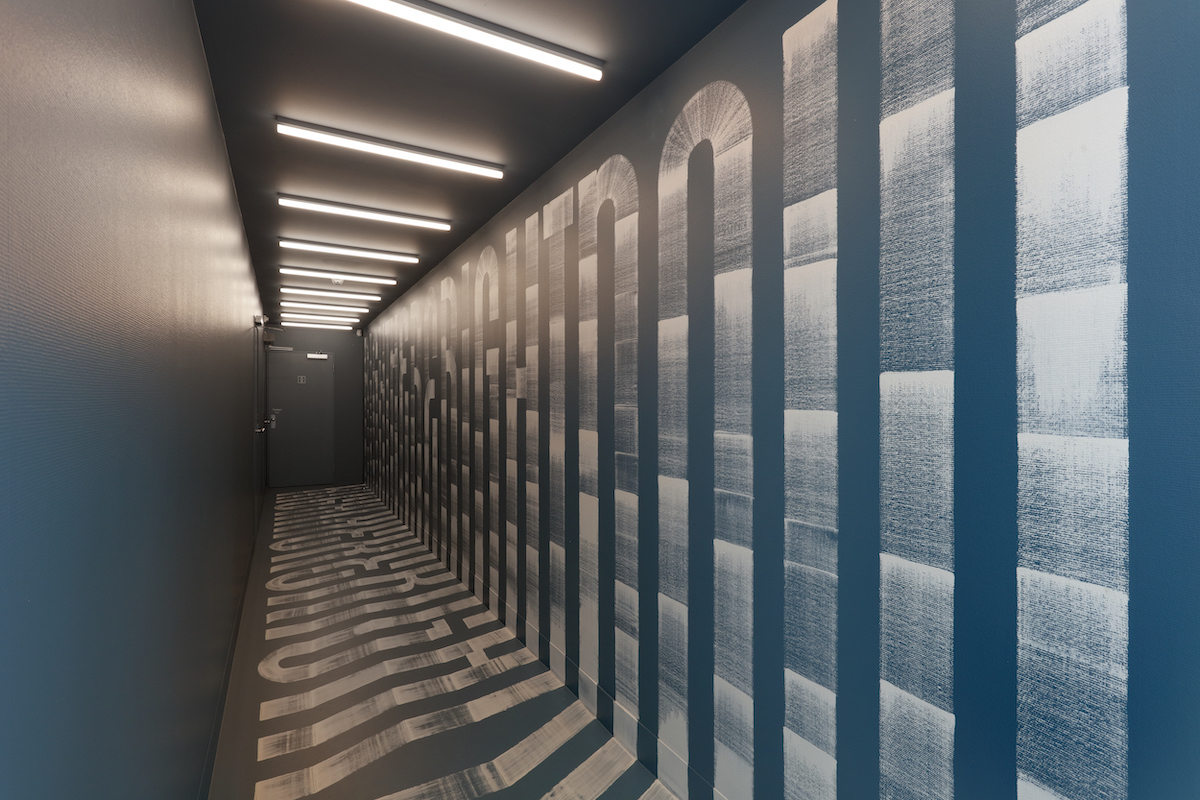
Gathering all that he’s learnt, Guido tells us he looks forward to his career evolving and beginning to follow a more autonomous path. Through his art collective, High on Type, Guido will also be creating a series of zines and potential collaborations alongside Julien Priez, Hans Schuttenbeld, Ivo Brouwer and his brother, Vincent de Boer, which means we can look forward to a wealth of exciting new type-based work form them, too.
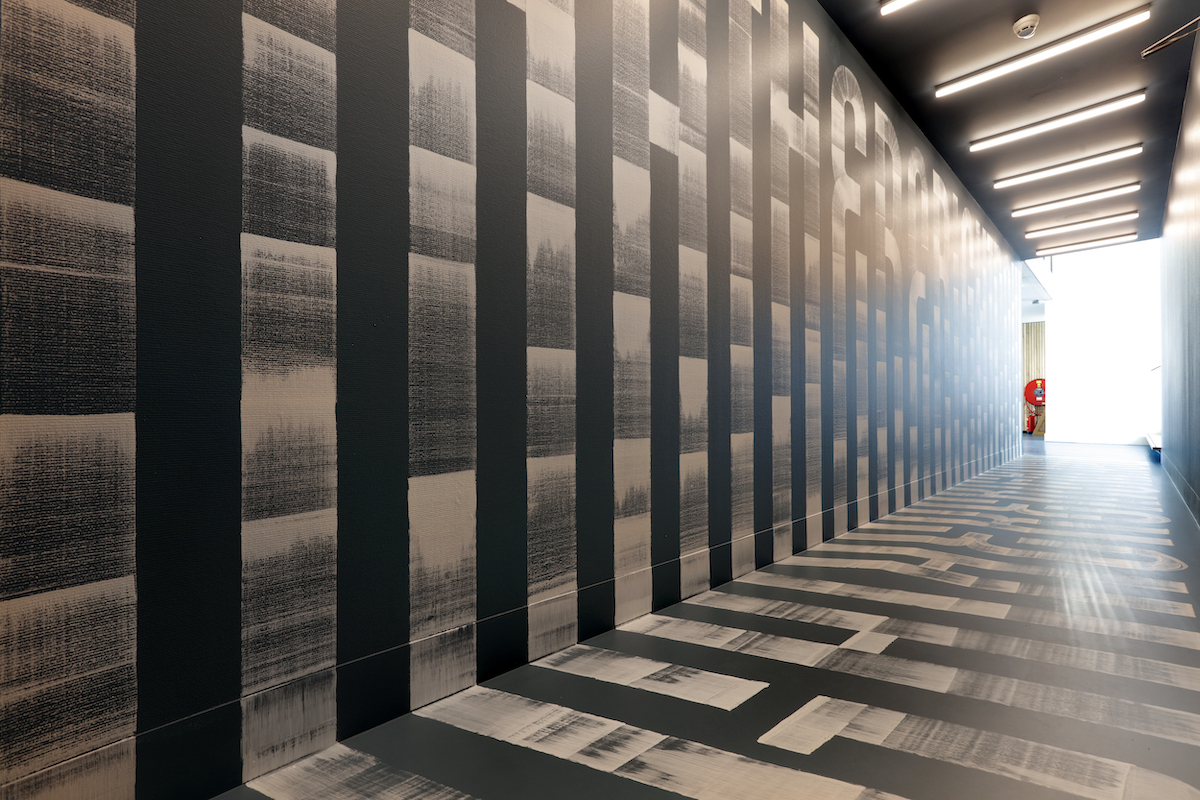
Photos: Jan Zweerts
‘I think if you look at my portfolio people will kind of get me quickly like “oh this guy only likes black and white and everything full stop”, but it’s not like that’, adds Guido. ‘I have very colourful, very expressive paintings in my house and in my studio from my friends and artists who I admire, but for me, I just like writing. And writing in its purist form is just black and white with ink and a brush and, for now, there’s not really anything else on my mind when I draw.’
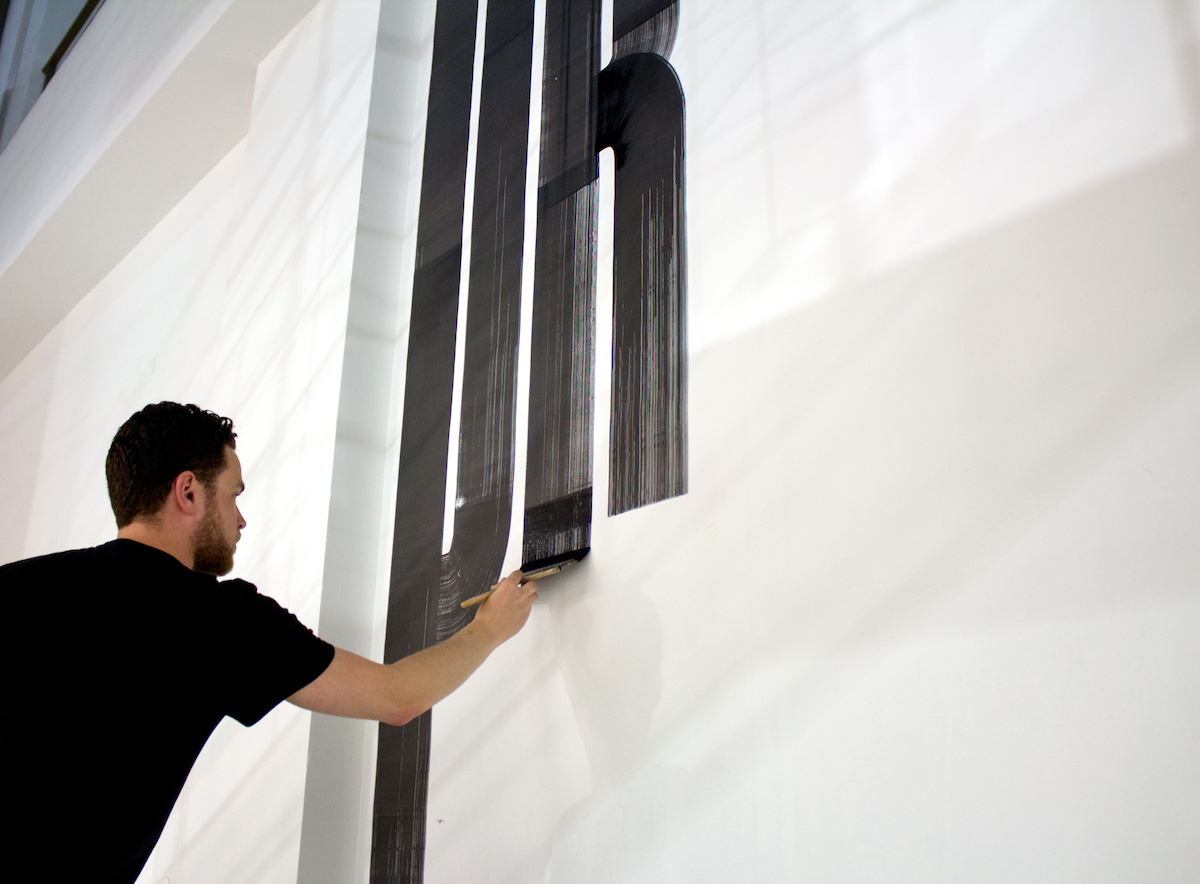
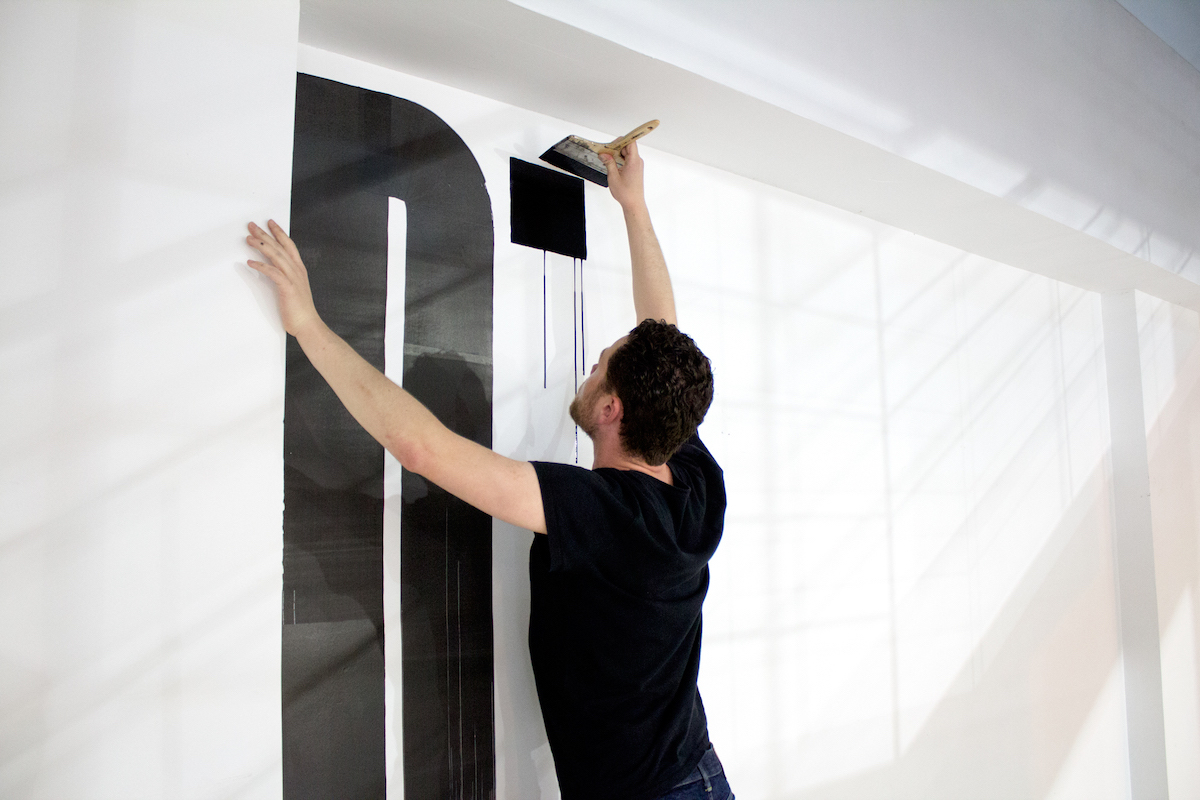
In a world with seemingly endless choices and ever-changing trends, perhaps Guido’s approach can offer a reminder that it’s OK not to do everything. In fact, it can be really refreshing to home in on one area that feels right for you. We can’t wait to see how Guido’s more autonomous ventures take form in the future, but for now, thanks Guido!

